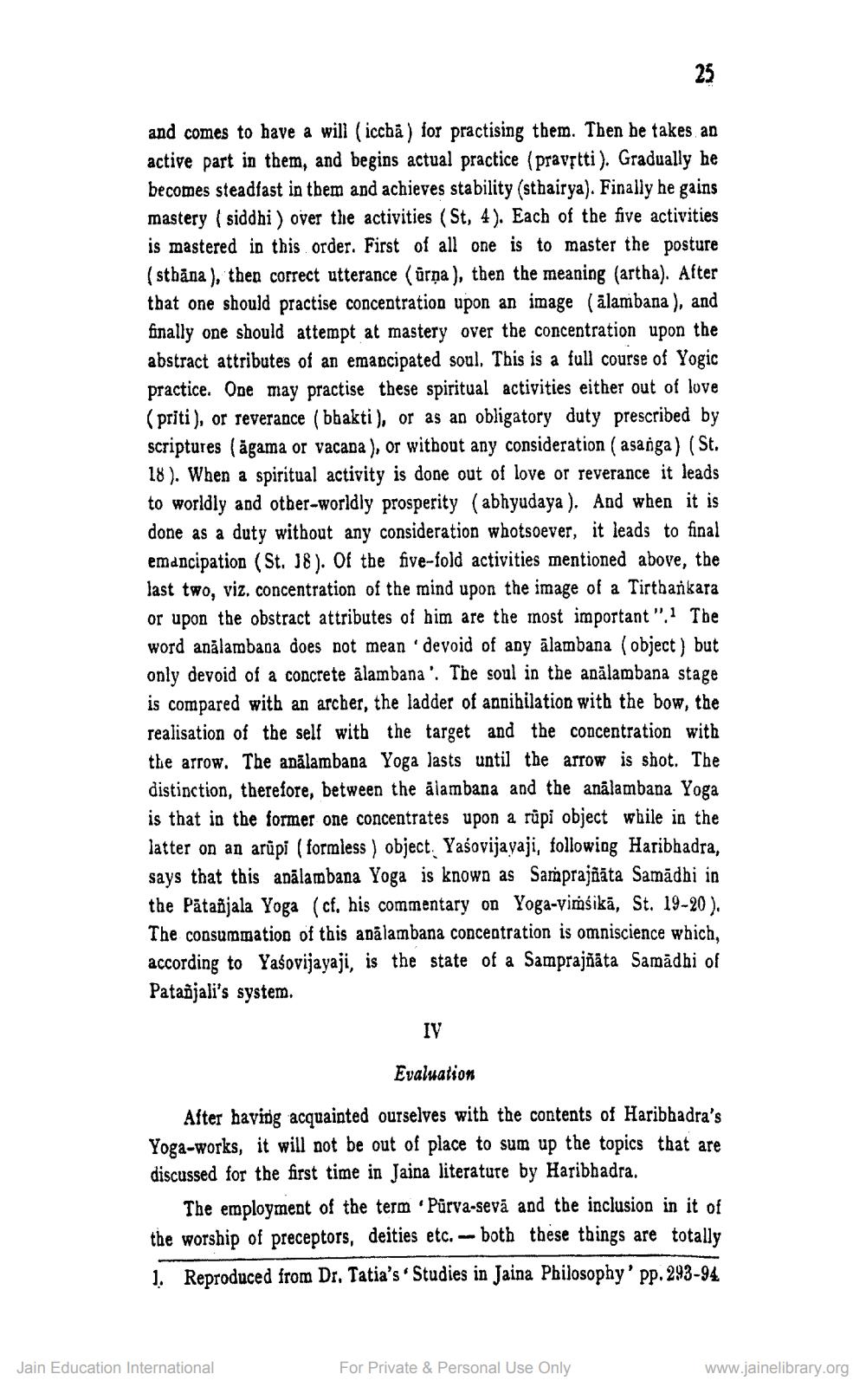________________
and comes to have a will (icchá) for practising them. Then be takes an active part in them, and begins actual practice (pravstti). Gradually be becomes steadfast in them and achieves stability (sthairya). Finally he gains mastery ( siddhi) over the activities (St, 4). Each of the five activities is mastered in this order. First of all one is to master the posture (sthåna), then correct utterance (ärņa), then the meaning (artha). After that one should practise concentration upon an image (alambana), and finally one should attempt at mastery over the concentration upon the abstract attributes of an emancipated soul. This is a full course of Yogic practice. One may practise these spiritual activities either out of love (priti), or reverance (bbakti), or as an obligatory duty prescribed by scriptures (agama or vacana ), or without any consideration (asanga) (St. 18). When a spiritual activity is done out of love or reverance it leads to worldly and other-worldly prosperity (abhyudaya ). And when it is done as a duty without any consideration whotsoever, it leads to final emancipation (St. J8). Of the five-fold activities mentioned above, the last two, viz. concentration of the mind upon the image of a Tirthankara or upon the obstract attributes of him are the inost important", The word anālambana does not mean devoid of any alambana (object) but only devoid of a concrete alambana'. The soul in the anālambana stage is compared with an archer, the ladder of annihilation with the bow, the realisation of the self with the target and the concentration with the arrow. The anālambana Yoga lasts until the arrow is shot. The distinction, therefore, between the alambana and the analambana Yoga is that in the former one concentrates upon a rūpi object while in the latter on an arūpi (formless ) object. Yasovijayaji, following Haribhadra, says that this anālambana Yoga is known as Samprajñāta Samadhi in the Patañjala Yoga (cf, his commentary on Yoga-vimśikā, St. 19-20). The consummation of this anālambana concentration is omniscience which, according to Yasovijayaji, is the state of a Samprajñāta Samādhi of Patañjali's system.
IV
Evaโนatio
After having acquainted ourselves with the contents of Haribhadra's Yoga-works, it will not be out of place to sum up the topics that are discussed for the first time in Jaina literature by Haribhadra.
The employment of the term Purva-sevā and the inclusion in it of the worship of preceptors, deities etc. - both these things are totally 1. Reproduced from Dr. Tatia's - Studies in Jaina Philosophy' pp. 293-94
Jain Education International
For Private & Personal Use Only
www.jainelibrary.org




